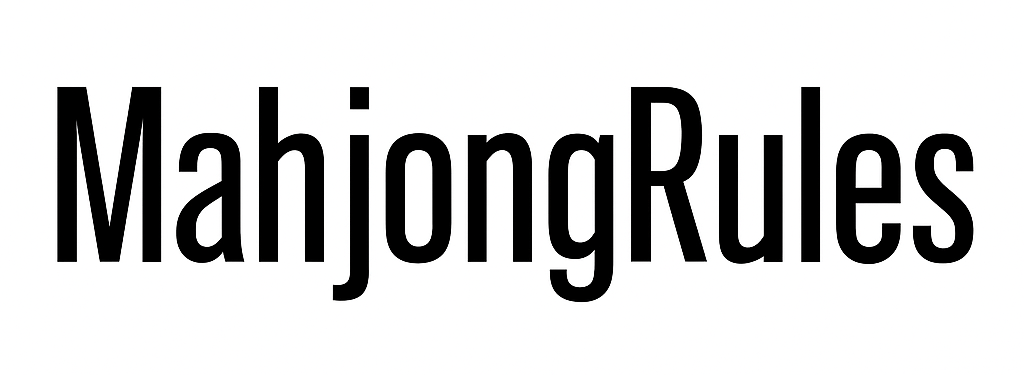There’s no heartbreak quite like breaking up a good pair – especially when it’s in your mahjong hand and the wrong move can cost you the win.
Hi, I’m Connor. Over the years, I’ve played thousands of hands across American, Chinese, and Riichi mahjong. And I’ll be honest – knowing when to break a pair is one of the trickiest decisions in the game. It’s not always about sticking to the plan. Sometimes, it’s about adapting in the moment.
Let’s break it down: when to split your pair… and when to hold on for dear life.
What Is a Pair in Mahjong?
Every winning mahjong hand – regardless of the variant – needs one pair.
A pair is two identical tiles. Simple, right? But the importance of that pair can shift dramatically based on the game version, the hand you’re building, and the situation at the table.
In American mahjong, certain patterns call for multiple pairs. In Chinese and Riichi, you only need one – but that doesn’t make it easier.
Connor’s Take:
“My first few games, I hoarded pairs like gold. Then I watched someone win by ruthlessly breaking theirs and pivoting. That’s when I learned: pairs are powerful, but they’re not sacred.”
When It’s Safe (or Smart) to Break a Pair
1. You Have Duplicate Pairs
If you’re sitting on three pairs, odds are you don’t need all of them. Breaking one can help you build melds (pungs/chows/kongs) instead.
Example:
You’ve got pairs of 2 Dots, 5 Bamboos, and 8 Characters.
If you draw another 5 Bamboo, you can pung it – now that’s progress.
2. You’re Chasing a Chow
Pairs don’t help with chows (sequences). If you have 5–5 of Bamboos and draw a 4 or 6, you may be better off breaking the pair and going for a 4-5-6 chow.
Connor’s Tip:
“In Riichi, I break pairs all the time if it gets me closer to a sequence-based win. Especially early game, flexibility > sentiment.”
3. Your Hand Requires a Specific Shape
Some advanced hands or American mahjong card patterns don’t even use pairs – or only use a single floating one. If a pair is blocking your progression, break it.
4. It’s Early in the Game
If you’re still fishing for a hand, nothing is set in stone. That pair could become a meld. Let the hand evolve.
Connor’s Take:
“I always say the first six turns are the wild west. Break, build, risk, restart – it’s all fair game.”
When You Should Never Break a Pair
1. You’re in Tenpai (One Tile from Mahjong)
If your pair is part of your winning condition – don’t touch it. Breaking your pair here is like tossing your lottery ticket before the numbers are called.
Connor’s Note:
“I once broke my pair while I was in tenpai… and immediately drew the tile I needed. Haven’t forgiven myself.”
2. It’s a Pair of Honors (Winds or Dragons)
Pairs of honors can score big, especially in Chinese or Riichi. If you’re close to making a pung or using them as yakuhai (value tiles), don’t break them lightly.
3. You’re Playing a Hand with Designated Pairs (American Mahjong)
Some National Mah Jongg League hands require specific pairs. Breaking one ruins the whole pattern.
Connor’s Tip:
“I keep my NMJL card next to my coffee cup. That way I don’t accidentally kill my hand while sipping.”
4. It’s Late Game and You’re Playing Defense
Sometimes, keeping a pair isn’t about offense. If discarding one would risk feeding another player a winning tile, better to hold tight.
Advanced Strategy: Reading the Table
Before breaking a pair, ask yourself:
- Is someone close to mahjong?
- Would discarding this tile be dangerous?
- Am I gaining a strategic advantage or just spinning my wheels?
Connor’s Take:
“I’ve started using a three-question rule before any discard: Does it help me? Hurt them? Get me closer to a win? If the answer is no across the board, I hold.”
Connor’s Quick Pairing Rules
- Early Game: Break freely if it helps build melds.
- Mid Game: Be cautious – consider risk and opportunity.
- Late Game: Only break if it’s clearly worth it, or you have no other choice.
FAQ: Breaking Pairs in Mahjong
Should I always keep my pair no matter what?
Nope. Flexibility is key. If your hand needs momentum, break the pair and pursue melds.
How many pairs should I keep?
In Chinese or Riichi mahjong, only one pair is needed. American mahjong can require more – but refer to your card.
Is it better to have chows or pungs instead of pairs?
It depends on your strategy. Chows are easier to build, pungs score higher. Pairs are essential but shouldn’t dominate your hand.
What if I have three pairs?
You likely need to convert at least one into a meld. Otherwise, you might stall out.
What’s the biggest mistake new players make with pairs?
Holding too many too long. Don’t be afraid to break and adapt – just know when it’s too late to pivot.
Final Thoughts
Pairs can be comforting. They’re neat, tidy, and always seem like progress. But in mahjong, clinging to them too tightly can block your path to victory.
Knowing when to break – or when to protect them – is a skill that comes with experience, awareness, and a little boldness.
Connor’s Last Word:
“Some of my best wins started with breaking what felt ‘right.’ And some of my worst losses came from holding onto pairs that just weren’t meant to be.”
🀄 Think before you pair up. Then play with purpose.
